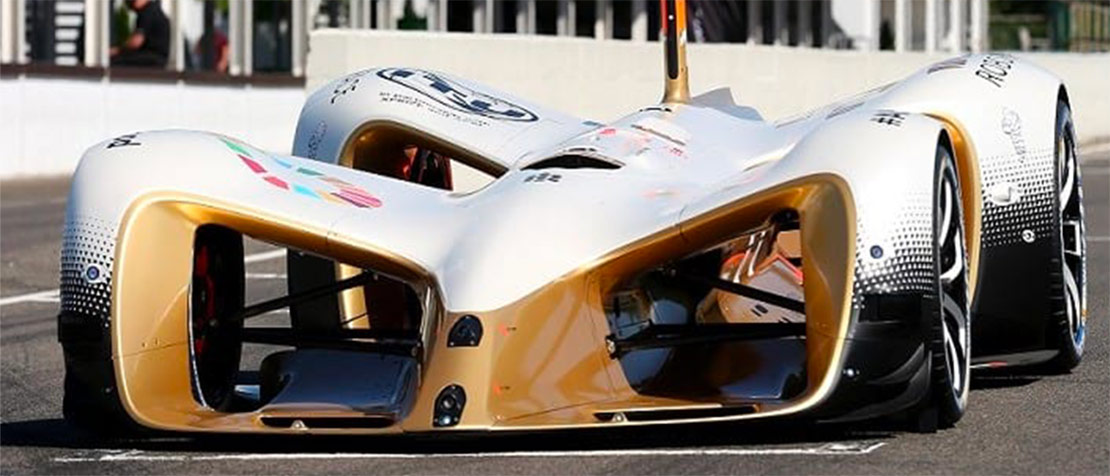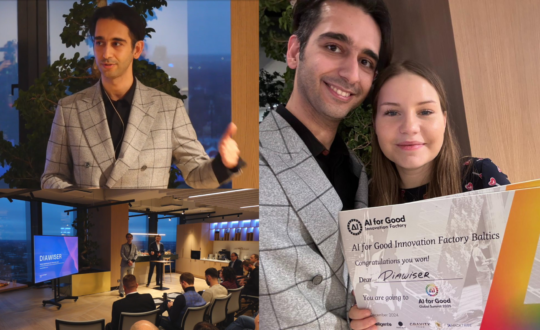Motorsport has always provided a proving ground for new automotive technologies. Every year the Goodwood Festival of Speed celebrates that history featuring a wildly eclectic mix of one-of-a-kind vintage cars, the latest hypercars, drifting cars, SUVs ready for the Dakar Rally, and much more.
Goodwood is the place to see wonders of motoring’s past and present. And, increasingly, the wonders expected of the future.
Last year, to mark its 25th Anniversary, the festival embraced the future with the Roborace Robocar making the first-ever autonomous run on the hillclimb. This year that trend continued with the fully electric Volkswagen ID.R breaking the outright record and Roborace’s DevBot 2.0 setting the first official autonomous record.

“Motorsport engages the public in advanced technology innovation and creates opportunities for engineers to develop critical skills for the future. Electric, connected and autonomous driving are that future,” says Bryn Balcombe, Chief Strategy Officer at Roborace.
Roborace, a sports media business developing completely new forms of autonomous motorsport, also established ADA (Autonomous Drivers Alliance), a non-profit association focused on contributing to global action in the interests of road safety – the initial outlines of which were shared with the UK CAV industry during Goodwood.
Beyond technology: Judging AI by measures of human performance
Success in all forms of motorsport requires objective assessment of data; both vehicle dynamics and human driver performance.
For self-driving cars Balcombe attributes performance into three areas; the vehicle, the intelligence platform (sensors & compute), and the AI ‘Driver’ software. Technical regulations control the safety aspects of the first two, while, just as it is for Formula One drivers, the AI ‘Driver’ software is governed by “sporting” regulations focused on driving behaviour.
“We need to go beyond the technical standards by which cars are normally judged and instead look at how we judge human driving behaviour – we need to look at the road regulations,” says Kirsty Lloyd-Jukes, CEO of Latent Logic, a company focused on ‘autonomous systems that model human behaviour’.
ADA and Latent Logic led the talks on ‘the future of smart and safe mobility’ at the 3rd AI for Good Global Summit in Geneva, 28-31 May 2019.
“Should AI ‘Drivers’ be held to the same legal driving standards as human drivers? That’s certainly the public expectation,” says Balcombe.
The original Turing test is a test of a machine’s ability to exhibit intelligent behaviour equivalent to, or indistinguishable from, that of a human.
“We are proposing a Turing Test for the road,” says Balcombe. “A test that defines a minimum performance threshold that can be standardized and harmonized internationally.”
At the AI for Good Global Summit, ADA and Latent Logic proposed that ITU and UNECE create an open platform to engage governments, academia and industry players to work towards the agreement of the definition of an AV Turing Test for AI on our roads.
“We would be testing if an autonomous vehicle can collaborate and coexist with humans – that’s drivers, cyclists and pedestrians – safely and capably on the roads; whether it can understand and predict intent,” says Lloyd-Jukes.
Towards a Turing Test for AI on our roads
ADA is building support for such a test across Europe, working with the autonomous driving community in the U.K. as well as the government of The Netherlands.
The ADA AV Turing Test is based on three principles to meet the burden of proof:
- Prove AI never engages in careless, dangerous or reckless driving behaviour
- Prove AI remains aware, willing and able to avoid collisions at all times
- Prove AI meets, or exceeds, the performance of a “competent & careful” human driver.
“If I’m to place my daughter’s life in the virtual hands of an AI ‘Driver’, I would absolutely expect that these three principles can be met continually throughout each journey,” says Balcombe. “That requires continual assessment of AI ‘Driver’ performance while in operational use.”
Discussion at the international level, says Balcombe, is aimed at creating a universal minimal threshold for AI Driver performance to provide the foundation necessary to build public trust before we can reach widespread deployment of AI on our roads.
“We want to encourage innovation and new ways of thinking but must also create cohesion in national and regional efforts if we want to see global impact,” says Balcombe.
Join the conversation
ITU and ADA are organizing an event dedicated to this AV Turing Test within ITU Telecom World in Budapest, Hungary, 9-12 September 2019.
Discussions will contribute to the development of a roadmap towards the establishment of performance standards for AI on our roads.
Confirmed speakers include:
- Bryn Balcombe, CSO, Roborace and ADA
- David Fidalgo, Co-Founder, AEVAC (Asociación Española del Vehículo Autónomo Conectado)
- Zoltán Hamar, Managing Director, Zala Zone Autonomous Test Track
- László Kishonti, CEO, AiMotive
- Jun (Harry) Li, Chair FG-VM, TIAA (Telematics Industry Application Alliance, China)
- Kirsty Lloyd-Jukes, CEO, Latent Logic
- Gaëlle Martin-Cocher, Director of Standards, Blackberry
- Richard Woods, Vice President, Towards Zero Foundation
















